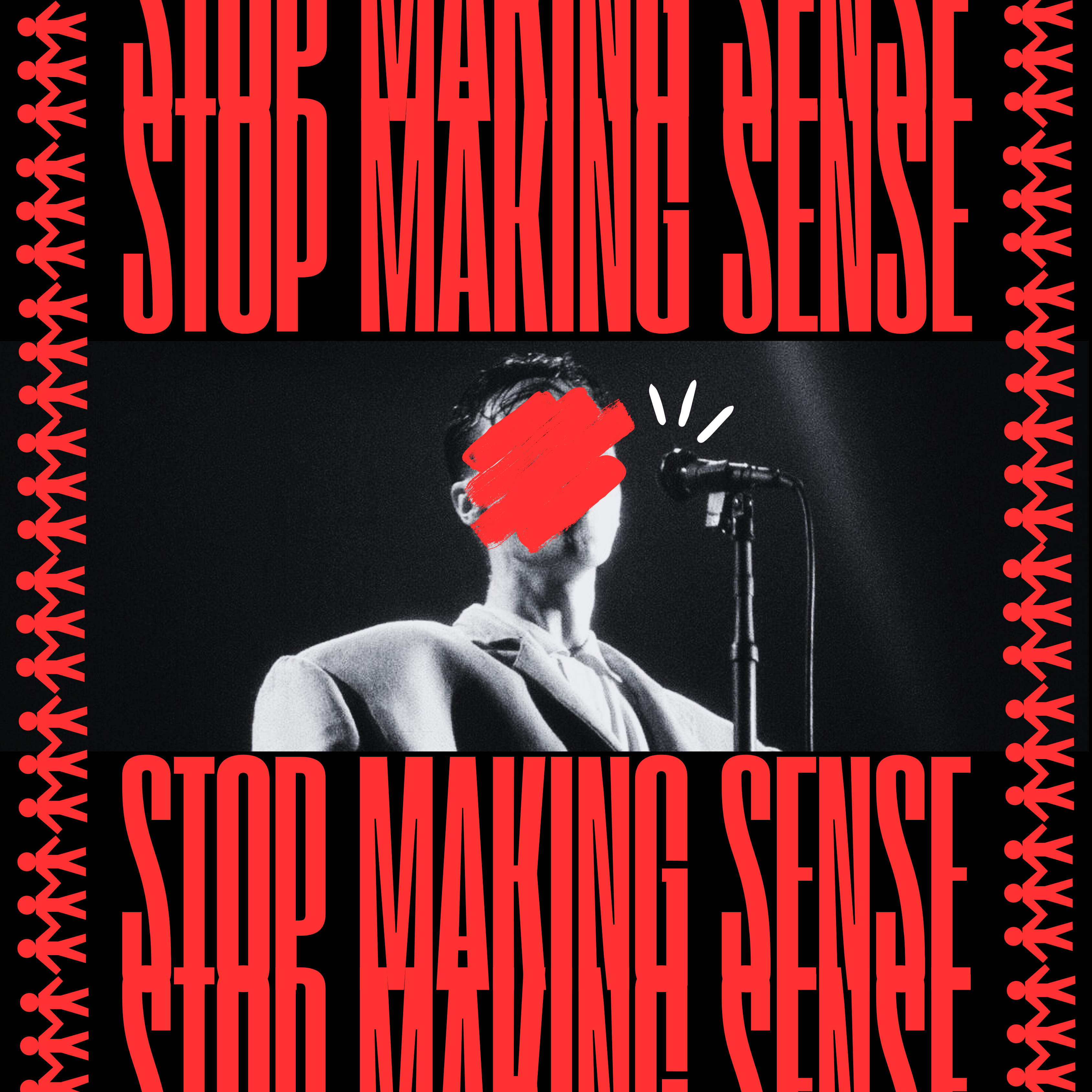Please visit response.fsu.edu for official FSU updates and resources.
Once in a Lifetime- The Imax Experience of Stop Making Sense

Hi, I’ve got a tape I want to play…
(Directed and captured seamlessly on film by Jonathan Demme and Jordan Cronenweth over the course of three separate nights at Hollywood’s Pantages Theater, the final product is not only a brilliant culmination of choice editing and technical efficiency but a heartful examination of the joy of performance. Being restored on the film’s 40th anniversary in glorious IMAX by production studio A24, the return of the film to theaters has effectively brought up a new generation of Talking Head fans.)
Stop Making Sense, at its core, is the story of a band. It begins with a solitary man, who is faceless but familiar, walking out onto the stage. As the camera follows his feet out from the backstage shadows and into the limelight, this tolerably titled “concert film” has already made its statement as a higher performative art piece -and it’s just getting started.
The camera pans up to the face of our performer; it’s, of course, David Byrne, mastermind and leading man of The Talking Heads. As the beginning chords of “Psycho Killer” ring out - only the second song Byrne ever wrote - we’re made to be suspicious of his apparent isolation in wide, awkward shots of him completely alone on stage. As the song closes out after a very stationary performance, the backing track skips up and sends Byrne into a cartoonish stumble across the stage. In the background, crewmembers are pushing in pieces onto the stage of a larger musical puzzle.
Song by song, the stage begins to fill up. First with bassist, Tina Weymouth, and by the fourth song, “Found a Job”, the entire Talking Heads lineup is present and accounted for. There are hints of wild expression in the performance thus far, but it’s not until track six, the ever-famous “Burning Down the House”, that Stop Making Sense truly transforms into something of its own league. The entire musical orchestra consisting of nine performers in total - each with their own distinct and shining moments - has now been assembled.
What follows is perhaps the most expressive form of modesty possible, as David Byrne and company flex their odd musical muscles in a way that’s by no means otherworldly. The set-pieces are somehow dream-like while remaining very grounded in our material world. Whether it’s swing dancing by lamplight or human limbs and disparate images being projected on the back wall, David Byrne invites us on a ride through his world of sense, and no one else’s.
As the story of The Talking Heads continues to unfold with “This Must Be The Place”, Bryne and the musicians at the forefront of the song huddle familially together under a lamp, existing in a space of comfort and warmth, even the expression on Byrne’s face thaws as he sings this powerful ballad of joy. The song “Once in a Lifetime” follows, creating what is perhaps one of the greatest one-two punches in live musical history. Here, the camera idles on Byrne, gyrating and holding his hands up high in hallelujah-like praise. The song plays powerfully as the climax to the entire show, and as it closes out with a grand cacophony of crashing cymbals, Byrne runs off stage.
A statement of identity is made, as Byrne’s absence strips what’s left on the stage of The Talking Heads title, as they transform into The Tom Tom Club, a spin-off band of Tina Weymouth and her husband/drummer Chris Frantz. A driving energy is certainly missing without Byrne, but he comes back better and literally bigger than ever, dawning the famous caricature suit for the final three songs.
After nearly ninety minutes of a perfectly constructed symphony of musical and expressionist synergy, the concert comes to a close with David Byrne thanking his bandmates and crewmates individually. A sense of familial love exudes from the stage as they share their moment in the sun together. If there was any animosity there, it was truly invisible, but its presence was certain, as their three-night run in the Pantages Theater would prove to be their last outing together as a uniform band.
Stop Making Sense, if nothing else, is a raw display of musical wizardry beyond what should be humanly possible. I would sincerely question the individual who has seen the film in its entirety that was not moved in the slightest by its presentation of a band truly at the height of their creative magic. Through all the running, stumbling, limping, and gibberish, perhaps the true spellcasting of Stop Making Sense resides in The Talking Heads’ final intention: to leave it all on the dancefloor one last time.
…Thank you, does anybody have any questions?
Written and Art by Christopher Robertson



